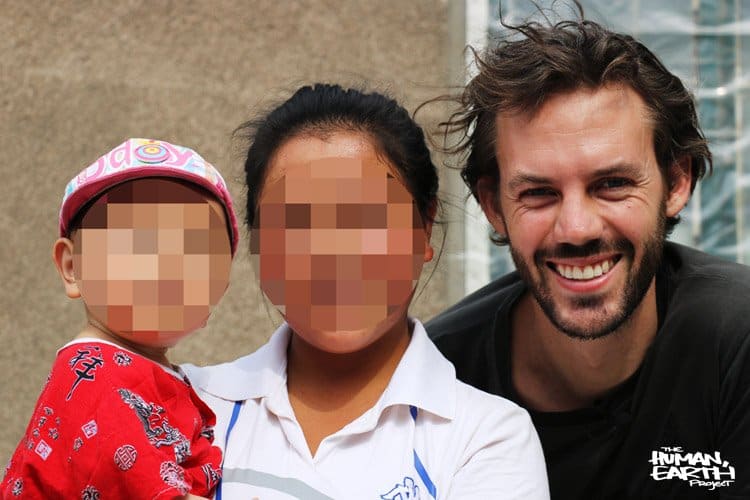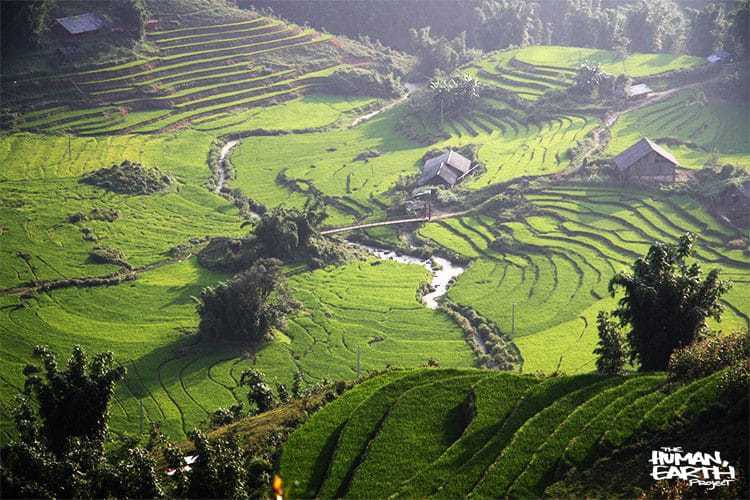Back in January we brought you the story of the plight of M, a 15 year old Hmong girl who was kidnapped from Vietnam more than two years ago, and Ben Randall, a film-maker, photographer and long-term traveller who set out to find her. Through ‘The Human, Earth Project’, Ben and his team were successful in finding M, who had become a victim of human trafficking. Last week I caught up with Ben to learn more about his efforts and the frightening situation that faces millions of people around the world.
It was very brave to take on the search. What motivated you to get involved in this project and are you surprised at all that you were so successful?
I’d never had a friend abducted before, and no less than three Hmong girls I’d known from that town were taken the same year. One of the most exciting things about ‘The Human, Earth Project’ is that, from the beginning, it was always a leap in the dark. It was born from a simple intention, with no clear path to follow. I had my hopes and dreams, of course, but it was impossible to say how much I was capable of achieving, and I could never have come so far without the help of our countless supporters around the world. Finding these girls has been fantastic, and bringing them home will be even better.
How did you meet M and when did you first become aware that she was missing?
M is a young Hmong girl from far northern Vietnam, very close to the Chinese border. In 2010, I was teaching English in the town where M was living and we quickly became friends. A year after I left Vietnam, M was abducted. I received a message from a mutual Hmong friend stating simply that she had been sold in China by a “Hmong boy”. M was sixteen at the time.
You’ve created an excellent blog detailing your search for M. What were some of the most difficult obstacles in your search and how did you overcome them?
Besides M’s Chinese “husband”, who is an extremely possessive, jealous and manipulative man, one of our biggest obstacles has been fear. Almost everyone we spoke to has been afraid – afraid of the traffickers, of their own governments, and even of the questions we were asking. Another major obstacle, sadly, was M’s own father. Having been misled into believing that his daughter has married well in China, and insisting that she remain loyal to her “husband”, M’s father deliberately concealed crucial information from us, which became a major stumbling block.
Is M open to any assistance now as I understand she has a child? Does she have any laws on her side?
M’s is a very complicated situation. Firstly, it’s very difficult to prove that M is a victim of human trafficking, rather than an illegal immigrant, and there’s no way of knowing whether the Chinese authorities would assist or imprison her. Secondly, M’s child is Chinese, and it would be extremely difficult, if not impossible, for M to take her little girl with her back home to Vietnam. By not recognising a trafficked mother’s right to her child, the law in this case inadvertently assists the traffickers, and leaves many victims of trafficking in an extremely difficult position.
Did you have much awareness about human trafficking before you learned of your friend, M’s plight? What are some of the most important things that you’ve learned?
To me – and, no doubt, to many of you who are reading this – “human trafficking” has always been one of those abstract phrases heard in the media, not something I could ever put a human face to, and certainly not something I would have expected to impact my own life so deeply. I’ve since learned a great deal about this vast and cannibalistic trade, how helpless its victims truly are, and how much they need our support. Through ‘The Human, Earth Project’, I want to give human trafficking the human face it needs, so that people can begin to understand the realities behind the statistics.
Do you see any punishment in store for the people involved in her kidnapping? Or is this practice likely to continue?
There seem to have been five people directly involved in M’s trafficking, including her “husband”. All five have a vested interest in M’s never returning home to Vietnam, where she could testify against them. One of her traffickers was arrested only ten days ago, and another is on the run, if he hasn’t yet been caught. Both face severe punishment under Chinese law. It seems unlikely, however, that M’s “husband” would ever be imprisoned for his role in her trafficking.
Your photography is beautiful. Are you self-taught?
Thank you, Andrea. My background is in film production, and I first developed an interest in portrait photography during my first overland journey through Asia. It took some time to develop a distinctive “style”, as you can see in my earlier portraits. Having given up the visual arts to focus on my writing, ‘The Human, Earth Project’ marks my return to portrait photography and film-making for the first time in over three years.
What is next for ‘The Human, Earth Project’?
There are two branches to ‘The Human, Earth Project’ – the search for M, and the search for 99 other people I photographed during my first journey through Asia, to help raise awareness of M’s plight. Both searches have been a phenomenal success – having found M, however, I’ll now be dedicating my efforts to helping her in any way I can, and to tell her story via our forthcoming feature-length documentary, ‘Sisters For Sale’. You can follow my progress with ‘The Human, Earth Project’ at www.humanearth.net
Awareness of human trafficking is crucial to ending it. I’d like to thank everyone who’s helped make ‘The Human, Earth Project’ what it is today – from those who have been following and sharing our stories, to those who have contributed their time, energy and finances, and those who have been promoting us via new or traditional media. We’re making a difference.
You may also enjoy these similar posts:
- 33shares
- Share on Facebook5
- Pinterest5
- Tumblr
- Evernote




